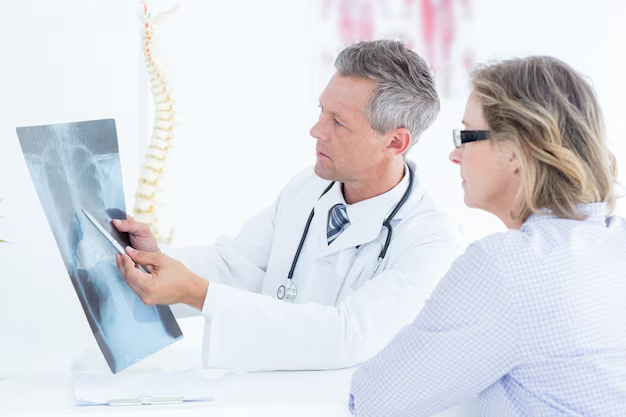Can Chiropractic Treatment Help with Scoliosis? Here's What You Need to Know
Every year, many individuals discover they or a loved one have scoliosis, a condition characterized by a sideways curvature of the spine. The quest for effective treatments often leads to questions about alternative therapies like chiropractic care. But can chiropractic really help scoliosis? You’re not alone in asking this, and the journey to find answers can be as complex as the condition itself.
What is Scoliosis?
Scoliosis is more than just a simple curvature of the spine. This condition often manifests during childhood or adolescence, though it can appear in adults as well. Recognizing scoliosis involves spotting signs such as uneven shoulders, one hip being higher than another, or the spine rotating. While some cases are mild, others can lead to significant health issues, affecting posture, causing pain, and limiting mobility.
Types of Scoliosis
- Idiopathic Scoliosis: This is the most common type, with unknown origins, and typically arises during growth spurts in teens.
- Congenital Scoliosis: Present at birth and results from malformations in the spine.
- Neuromuscular Scoliosis: Develops due to abnormal muscles or nerves, often associated with conditions like cerebral palsy.
- Degenerative Scoliosis: Common in older adults, this form arises due to wear and tear of the spine.
Understanding Chiropractic Care
Chiropractic care is a form of alternative medicine focusing on diagnosing and treating mechanical disorders of the musculoskeletal system, especially the spine. Chiropractors employ hands-on spinal adjustments and manipulations with the goal of improving physical function and alleviating pain.
Philosophy Behind Chiropractic
The foundational belief is that proper alignment of the musculoskeletal structure will enable the body to heal itself without surgery or medication. Used primarily as a pain-relief alternative for muscles, joints, bones, and connective tissues, chiropractic treatment often complements traditional medical care.
How Chiropractors Approach Scoliosis
Chiropractors' approach to scoliosis is as varied as the patients they treat. Typically, the process includes assessment, personalized treatment, and ongoing management.
The Assessment Phase
- Initial Evaluation: This typically includes a physical exam, patient history, and any relevant imaging tests to determine the degree of scoliosis.
- Creating a Treatment Plan: Based on findings, chiropractors may design a tailored plan, focusing on improving spinal alignment, alleviating pain, and enhancing mobility.
Treatment Approaches
Spinal Adjustments:
- Adjustments are precise manipulations intended to improve spinal balance, flexibility, and function.
- Benefits: This can potentially reduce rib rotation and improve posture.
Soft Tissue Therapy:
- Techniques such as massage could help in reducing muscle tension around the spine.
Exercises and Rehabilitation:
- Custom exercise routines aimed at strengthening muscles and supporting spinal structure.
Lifestyle Advice:
- Suggestions on improving ergonomics and posture in daily activities may also be offered.
Case for Chiropractic Care in Scoliosis
- Non-Invasive: It does not involve surgery or pharmaceuticals.
- Improves Quality of Life: Patients often report enhanced quality of life due to pain reduction and improved mobility.
- Personalized Care: Each treatment plan is tailored to the individual's needs.
Limitations of Chiropractic in Scoliosis Management
While chiropractic treatment offers potential benefits, it's crucial to acknowledge its limitations.
- Not a Cure: Chiropractic care cannot cure scoliosis or correct severe spinal curves.
- Varied Results: Outcomes vary widely among patients.
- Need for Collaboration: It is often most effective when combined with other treatments, including physical therapy or, in severe cases, surgical options.
Combining Chiropractic with Other Treatments
- Physical Therapy: Working in tandem with physiotherapists can optimize strength-building exercises and flexibility programs.
- Bracing: A non-surgical alternative for children and teens with moderate scoliosis, often complements chiropractic care.
- Surgery: In severe cases, especially where breathing or physical function is compromised, surgery might be necessary.
Practical Steps Forward
If you’re considering chiropractic as part of scoliosis management, here's how to proceed:
- Consult with Healthcare Providers: Always discuss with your primary care physician or a specialist to understand all available options.
- Research Chiropractors: Look for chiropractors specializing in scoliosis with good reviews and credentials.
- Set Clear Goals: Understand what you aim to achieve—be it pain relief or improved function.
- Track Progress: Monitor and document improvements or changes in symptoms.
Final Insights
Scoliosis presents unique challenges, and while chiropractic care is not a panacea, it can be a valuable component of a comprehensive management strategy. Each person's experience with scoliosis is unique, so treatments should be as individualized. Consider chiropractic as one of several tools in managing scoliosis, particularly for symptom relief and improved mobility.
Key Takeaways
- Chiropractic care offers a non-invasive support system for scoliosis management.
- Benefits include potential pain reduction and improved mobility but not a cure.
- Personalized plans are essential for optimal results.
- Team Approach: Combining chiropractic with other therapies often yields the best results.
Quick Summary 📝
- Scoliosis: A spinal curvature, often appearing in adolescents.
- Chiropractic: Optimizes spinal alignment and mobility.
- Approach: Includes spinal adjustments, rehabilitation exercises, massage.
- Limits: It's not a cure; best combined with other treatments.
- Action Steps: Consult healthcare providers, set goals, collaborate across specialties.
Using holistic and integrative strategies can equip you or a loved one with tools to better manage scoliosis. Always involve qualified healthcare professionals in the decision-making process.
